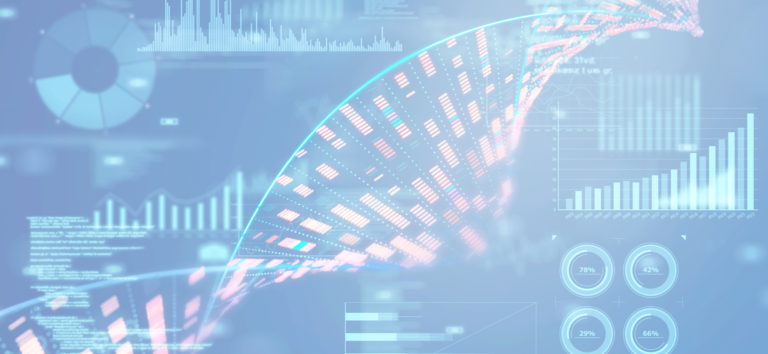Imagine if a chef had to grow their own food for every meal they cooked. It would be highly inefficient. The gardening, harvesting, and packaging would pull the chef away from their day job of cooking meals that delight diners.
Now, turn that analogy around and apply it to your marketing, sales, and customer service leaders. Do you expect them to hunt and gather different types of data they need to do their jobs effectively? Even if they could find and aggregate the needed data, could they do it repeatedly and efficiently? Unless you’re already using a customer data platform, the answer is likely a hard no.
The farmer and chef analogy comes from David Raab, founder of the CDP Institute, a vendor-neutral organization dedicated to helping companies manage customer data. I recently sat down with Raab to record an episode of Customer Data Perspectives for CDP.com. In the interview, Raab does an exceptionally good job of demystifying customer data platforms (CDPs), discussing the problems they address, and clearing up misconceptions about CDPs in relation to data lakes, CRMs, and other platforms.
“People think: ‘oh, a CDP is just a database,’” Raab says, explaining that the function of a CDP is non-trivial and much more than a database. “We sometimes talk about CDPs like a farmer. The farmer does all the work to get the food, but they put it on the shelf so the chef can just go into the store and grab the food they need without worrying about how you grow it.”
This episode is a can’t-miss interview for anyone who has ever wondered what’s so important about CDPs, or struggled to explain what the technology does. Watch below, and view the full transcript here.
What Is A CDP?
At its core, Raab says he can explain what CDPs do in three simple words: “build customer profiles,” also known as the single customer view or a unified customer profile.
“They take the data from all of your systems that have customer data – and there are a lot of systems that have customer data today – and they pull that data into one place into a unified profile. So you get a complete picture of each customer. Then they make that profile shareable by any system that needs it,” he explains.
I love a simplified definition, and Raab nails it. But his definition also opens up questions about whether CDPs are really all that different from customer relationship management platforms (CRMs), marketing automation platforms, or even data warehouses and data lakes. The answer is a resounding yes. In the interview, Raab explains the differences and clears up the misconceptions. It starts with understanding that each of your systems only has a partial view of the customer.
“The CRM knows what happened in the CRM. The web personalization system knows what’s happening in web personalization. The call center knows what happened in the call center, but they are all separated silos. Bringing that data together is really tricky,” Raab says.
Diving Into Data Lakes
He goes on to explain why consolidating customer data and unifying customer data is not easy, noting the data complexity problems you encounter when data is stored or when data is collected in different ways. CDPs provide that missing link of data unification. Unlike data warehouses, they can deal with both unstructured and semi-structured data. That opens the doors to tap web behavior logs, behavioral data, and other data sources or customer touchpoints that hold so much rich customer data.
Raab also discusses the benefits of data lakes at length, noting that they are great data sources for CDPs. But he cautions that data lakes are really just the start for companies that want to empower marketers, sales, and customer service leaders to do their jobs better.
“Traditionally, data scientists go into the data lake. They dive around, scavenge, and pick up the little bits they need. They come up to the surface and then go off into their little data scientist hut or boat or wherever it is data scientists live,” Raab jokes before getting serious again. “But they’re not creating an ongoing, clean data repository that other systems can use. That’s not what data lakes are for.”
Why Adopt a CDP?
So what are the most common use cases for CDPs, and what industries adopt them? In the interview, Raab puts on his analyst hat and describes the most typical use cases, including enhanced customer support in call centers, customer acquisition through ad retargeting, and the ability to build out more robust customer profiles for marketing and sales.
With revenue generation and customer experience sitting at the heart of digital transformation efforts, CDPs are rapidly becoming the next must-have tool for organizations that want to use data to more effectively target growth opportunities, pilot new products, understand customer behavior and improve customer experiences.
Traditionally, CDPs were adopted by those in the media, retail, telco, and financial services industries. But as Raab explains, adoption is becoming more mainstream, with industries including education and healthcare seeing the value in building customer profiles and unifying data. CDPs with built-in data privacy functions are especially appealing for industries with tight privacy regulations such as healthcare and to ensure compliance with GDPR, CCPA, and other regulations touching all industries.
There are many factors to consider when you start the CDP vendor selection process. Raab ends the interview by offering advice and guidance on factors to consider, including urging business, technology, and data leaders to really understand their use cases and what shape their data is in. Leaders should consider the tech buying personas in their organization, so they can identify the value propositions for leaders and departments that have the most to gain from using CDPs.
For organizations trying to convert prospects to buyers, personalize experiences, and become more customer-driven, chances are you’re going to have many leaders across the organization ready to partner on implementing a CDP.



